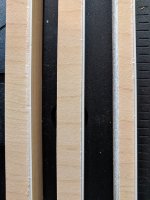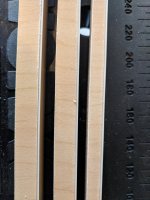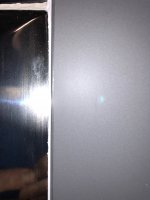Thanks for all the replies, it helps a lot.
Oldwood, thanks for setting my expectations on this. I was earlier assuming I would get an invisible line.
Laminator, yes the cuts are 90 degree. now when i hold the conturo flat (without tipping) i get same glue line thickness on both sides.
grobkuschelig, i agree i should try white glue. i don't have it at the moment, and even though my 1st thought was to use natural glue for maple ply, i realized that the trimmed banding edge is more white than natural, and white might do better.
simonh, thanks for the photo. it looks great. when i zoom in i see the thin black glue line and it seems similar to what i am getting. good to know that i am not the only one with some learning curve on the tool. Peter Parfitt made it look very easy in his video.

escan, the 3rd from the left (rightmost one) was the best i could do. the only time i guess i got a bit thinner line was when the conturo was tipping (my initial attempts) and the bottom had a tighter glue line, but the top was much worse.
few more observations from my side:
. there was no difference with the white banding which was completely flat.
. start and stop are tricky. maybe over time i will get this right. i agree the mft table would be better for flat stock, but that is an additional expense and space need. also i bought this tool for the portability factor.
. the only pressure that needs to be applied is on the roller towards the piece, the rotating roller will help move the tool from right to left.
. it is necessary to have the 2" extra on both starting and ending sides, as there often is nonuniform application glue at the start end of the banding. not sure if i can do anything about this.
. it looks like the carbide cleanup tool is really needed to remove the extra sticking glue. i broke down and ordered it.
. as an experiment i tried to pull the edge banding off the next day (with the help of the untrimmed overhang). i was a bit surprised that it came off so easily. i guess this won't really be an issue once things are all trimmed down as there wouldn't be a way to pull it with that kind of leverage.

still. but i read somewhere that it is much harder when glue is applied to the stock instead of the banding.



